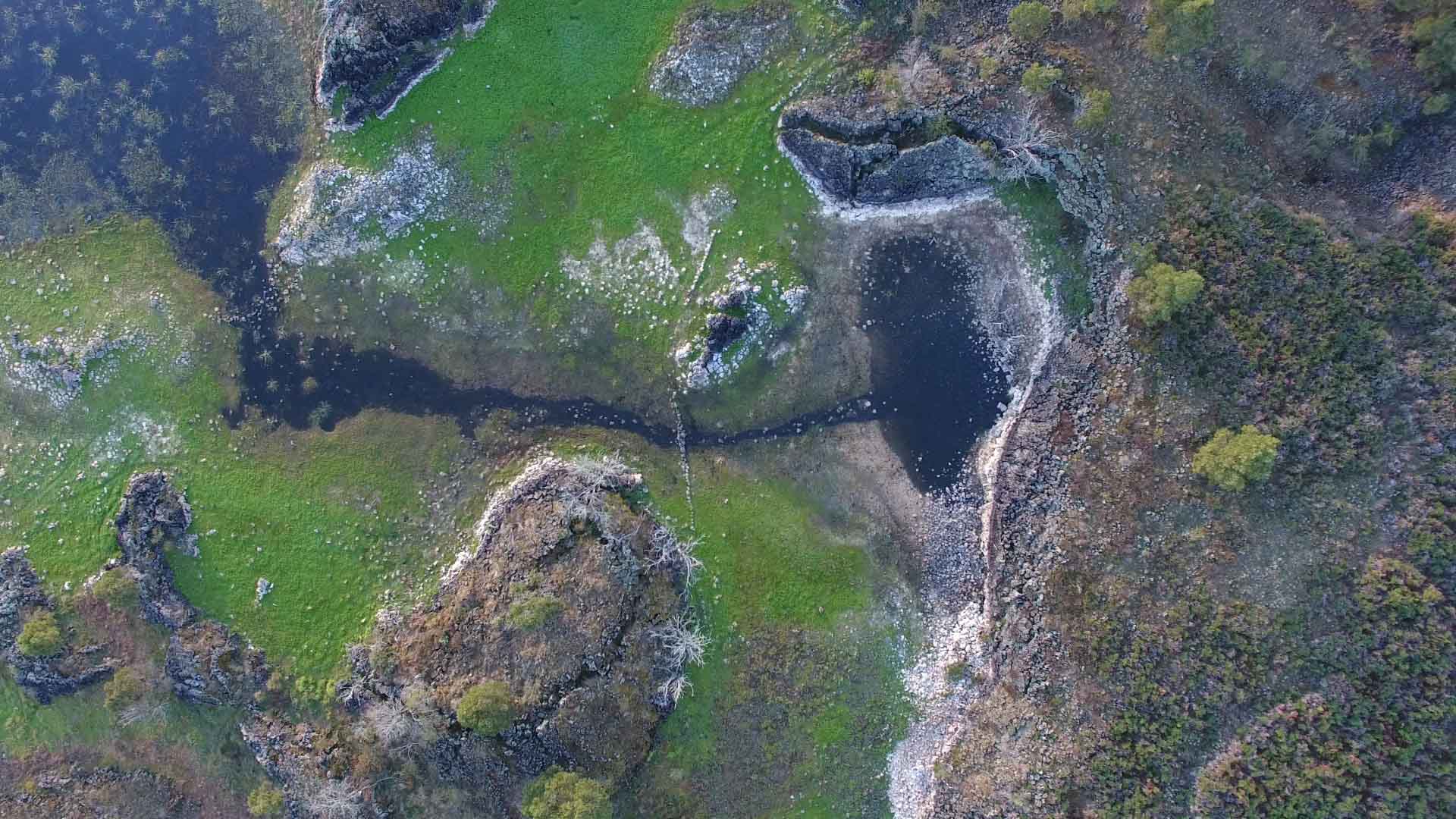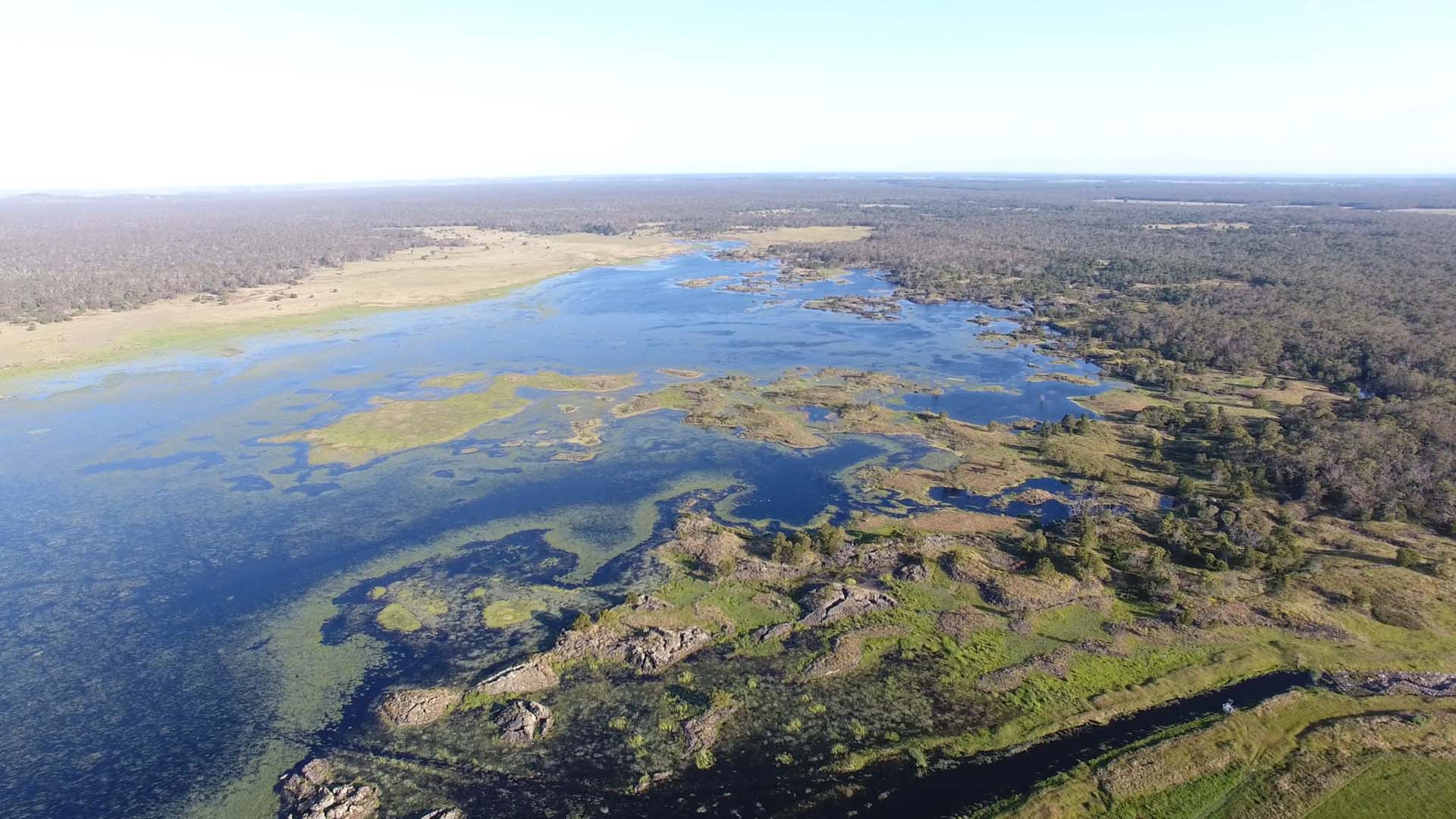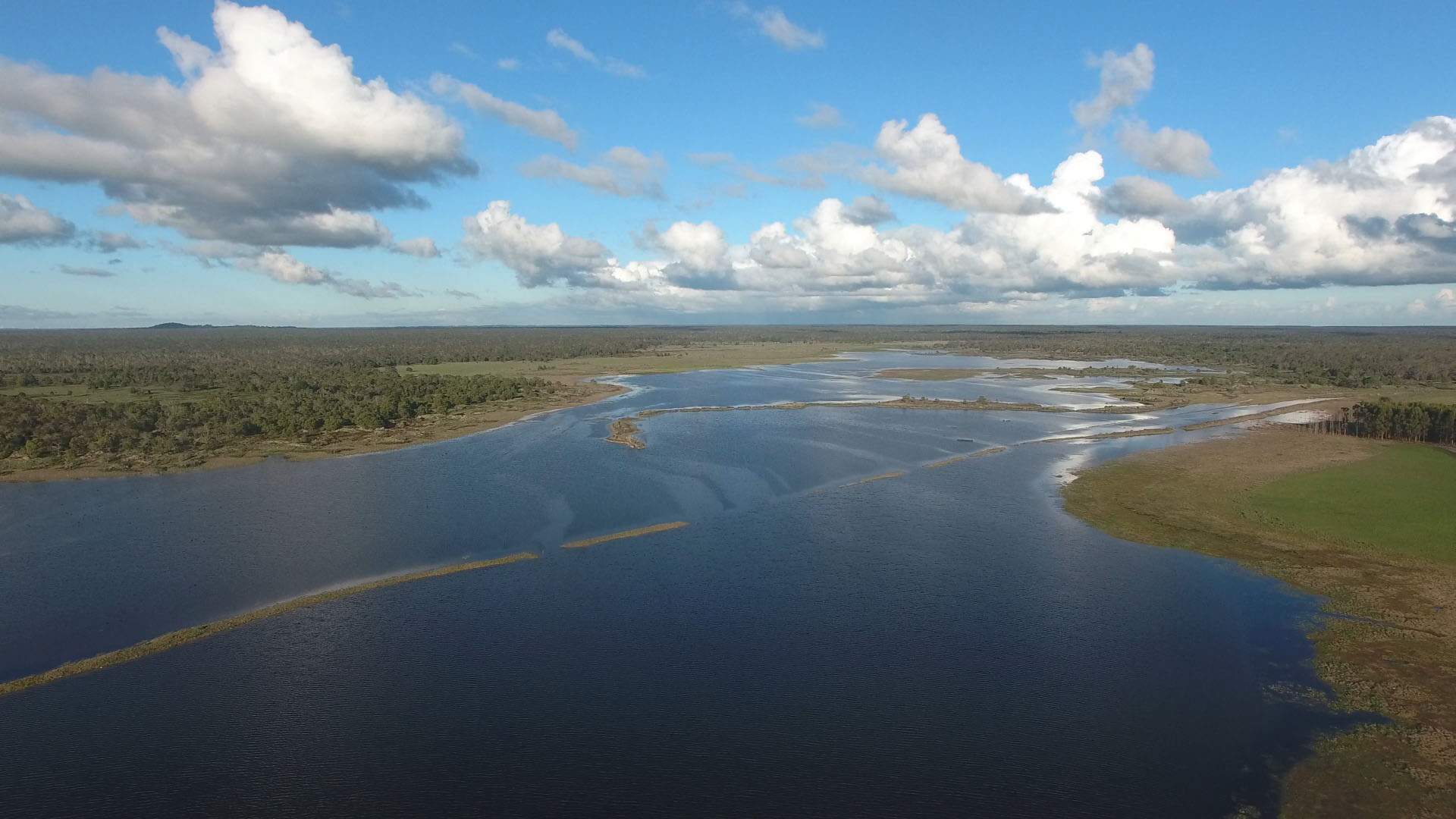Australia's Ancient Indigenous Budj Bim Region Has Been Added to UNESCO's World Heritage List
It's among 21 new places added to the list, all during the World Heritage Committee's 2019 meeting in Azerbaijan.
Just as NAIDOC week kicks into gear for 2019, Australia's Budj Bim Cultural Landscape has been added to UNESCO's World Heritage List — becoming the first Australian site to receive recognition exclusively for its Aboriginal cultural values.
During its current meeting in Baku, Azerbaijan, the United Nations Educational, Scientific and Cultural Organisation added the south-west Victorian site to its list of landmarks and areas that are legally protected due to their significance.
Located on Gunditjmara country, the region spans the Budj Bim volcano, Tae Rak (Lake Condah), the Kurtonitj wetlands, and Tyrendarra's rocky ridges and large marshes. It also includes remnants of more than 300 round, basalt stone houses, which demonstrate the Gunditjmara people's permanent settlement in the area.
Of specific interest to UNESCO, Budj Bim features a system of channels, dams and weirs, all made possible due to basalt lava flows that have been carbon-dated back to 6600 years. The complex network is considered one of the the largest and oldest aquaculture setups in the world, and is used not only to contain floodwaters, but to trap and harvest the kooyang eel.
The listing comes after five years of work between Gunditjmara people and the Victorian and Australian governments to develop Budj Bim's World Heritage nomination, and marks Australia's 20th entry on the list — alongside the Great Barrier Reef, Kakadu National Park, Fraser Island, the Tasmanian wilderness, the Greater Blue Mountains area, the Sydney Opera House and the Royal Exhibition Building and Carlton Gardens, among others.

Tae Rak channel and holding pond,Tyson Lovett-Murray, Gunditj Mirring Traditional Owners Aboriginal Corporation
In total, UNESCO has added 21 new sites to the World Heritage List as part of its 2019 conference, which runs through until Wednesday, July 10, and will examine 35 nominations in total. In addition to Budj Bim, the new entries showcase spots in China, Iran, France, Iceland, Brazil, Bahrain, Canada, Germany, Czechia, India, Indonesia, Japan, Poland, Myanmar, Republic of Korea, Lao People's Democratic Republic, Burkina Faso and Iraq, including Babylon.
The list of new cultural sites chosen so far is as follows:
Migratory bird sanctuaries along the Coast of Yellow Sea-Bohai Gulf of China — natural site.
Hyrcanian forests in the Islamic Republic of Iran — natural site.
French Austral Lands and Seas in France — natural site.
The fire and ice of Vatnajökull National Park in Iceland — natural site.
The culture and biodiversity of Paratyand Ilha Grande in Brazil — natural and cultural site.
Ancient ferrous metallurgy sites of Burkina Faso — cultural site.
Babylon in Iraq — cultural site.
Dilmun burial mounds in Bahrain — cultural site.
Budj Bim Cultural Landscape in Australia — cultural site.
Archaeological ruins of Liangzhu City in China — cultural site.
Jaipur City, Rajasthan in India — cultural site.
Ombilin coal-mining heritage of Sawahlunto in Indonesia — cultural site.
Mozu-Furuichi Kofun Group of mounded tombs from Ancient Japan — cultural site.
Megalithic jar sites in Xiengkhouang — Plain of Jars in the Lao People's Democratic Republic — cultural site.
Bagan in Myanmar — cultural site.
Seowon, Korean Neo-Confucian Academies in the Republic of Korea — cultural site.
Writing-on-Stone /Áísínai'pi in Canada — cultural site.
Erzgebirge/Krušnohoří mining region of Czechia and Germany — cultural site.
The landscape for breeding and training of ceremonial carriage Hhrses at Kladruby nad Labem in Czechia — cultural site.
The water management system of Augsburg in Germany — cultural site.
Krzemionki Prehistoric Striped Flint Mining Region in Poland) — cultural site.
UNESCO also extended the heritage listing of the Natural and Cultural Heritage of the Ohrid region, to not only include northern Macedonia but also Albania.
Prior to the 2019 meeting, the World Heritage List included 1092 different sites spread across 167 countries. Need some travel inspiration — or a reminder of just how wondrous our planet is? Browsing the full list will take care of that for you.
Top images: Lake Condah, Tyson Lovett-Murray, Gunditj Mirring Traditional Owners Aboriginal Corporation / Tae Rak in flood, Tyson Lovett-Murray, Gunditj Mirring Traditional Owners Aboriginal Corporation.






